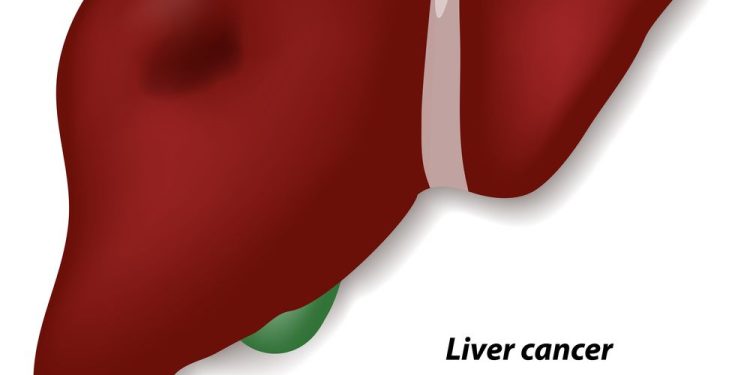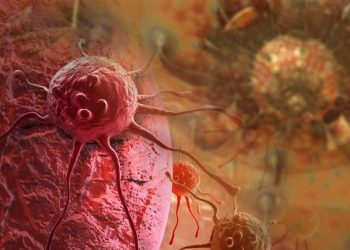There are many different types of liver cancer. Each has its own specifics, and every patient is different. Memorial Sloan Kettering specialists care for patients with all types of liver tumors — from the most common, such as hepatocellular carcinoma (HCC), to rare forms like bile duct cancer and hepatoblastoma.
Hepatocellular carcinoma
The liver is a large organ that’s behind your ribs on the right side of your body. It breaks down and stores nutrients like sugars, starch, and fats. It also makes proteins that help your blood clot and cleans the blood by removing harmful substances. Sometimes, cells in the liver change and grow out of control. These changed cells may form a lump or mass called a tumour. The cancer may spread to nearby tissue or to other parts of the body. If the cancer starts in liver cells, it’s called primary liver cancer.
Hepatocellular carcinoma (HCC) is the most common type of liver cancer in adults. It starts in the liver cells called hepatocytes. HCC usually doesn’t cause any symptoms until it gets very large. When it does cause symptoms, they include bloating or belly pain, loss of appetite, tiredness, and yellowing of the skin and eyes (jaundice).
HCC is often found when doctors are screening for an underlying disease or treating other health problems. However, it can happen spontaneously in people with no known risk factors. It is the sixth leading cause of cancer death in the world and is increasing rapidly in some countries.
People who have chronic viral hepatitis B or C infection are at the highest risk of developing hepatocellular carcinoma. Other risk factors include alcohol use, hepatitis D virus infection, and genetic conditions such as hemochromatosis and alpha-1 antitrypsin deficiency.
Liver angiosarcoma (hemangiosarcoma) is a rare type of cancer that starts in the blood vessels in the liver. It is a secondary cancer, meaning it started in another part of the body and spread to the liver. It’s more common in older people. It’s also more common in American Indian or Alaska Native people.
Other types of liver cancer include bile duct cancer and non-alcoholic fatty liver disease. Non-alcoholic fatty liver disease is when fat builds up in the liver and causes inflammation. The most common symptom of this is a dull feeling in the upper right abdomen. It’s sometimes hard to diagnose because the symptoms can be similar to other health problems.
Some types of liver cancer can be prevented by not drinking alcohol and by getting tested for hepatitis, cirrhosis, and hepatitis C infection. Other prevention strategies include eating a balanced diet, losing weight, and exercising regularly. If you’re diagnosed with liver cancer, your doctor will talk to you about your treatment options. They’ll base their recommendations on the type of cancer you have, how fast it is growing, and your age, fitness, and medical history. You might need surgery, radiation, or chemotherapy. Sometimes, they might recommend a special procedure called embolization. This is a way to reduce the blood supply to the tumor by blocking the hepatic artery. The liver can still get blood from a different blood vessel called the portal vein. This can slow down or stop the growth of the tumor. Other types of treatments can also be used to treat the cancer, such as targeted therapy and immunotherapy.
Treatment
If the cancer is found early, it is often possible to treat it completely with surgery or other procedures. You may also need to have chemotherapy or immunotherapy to control the cancer and relieve symptoms. This is a combination of drugs that targets cancer cells and boosts your body’s own immune system. Your doctor will choose which type of treatment to use based on your needs and how the cancer is staged. Staging describes how big the cancer is and whether it has spread. Your doctor will base this on how abnormal the cancer cells look under a microscope and what parts of the body the cancer has affected (the T, N, and M stages).
A small number of bile duct cancers develop in the ducts inside the liver (intrahepatic). Most cholangiocarcinomas, however, develop in the larger ducts that run from the liver to the small intestine (extrahepatic).
Your doctor will examine you and take a sample of the tumor using a thin needle inserted through the skin into the area of concern. He or she will often need to perform this procedure using imaging tests, such as an endoscopic retrograde cholangiopancreatography (ERCP) or magnetic resonance cholangiopancreatography (MRCP).
The biopsy is then sent to a laboratory for further testing. Your doctor will then grade the cancer based on how the cells look under a microscope. This information helps to predict how fast the cancer might grow and whether it is likely to spread.
In the UK, a biopsy of your bile duct cancer is usually sent to a specialist unit for further examination. This multidisciplinary team is made up of doctors, nurses, physiotherapists, occupational therapists, dietitians, psychologists and other health professionals. They follow National Comprehensive Cancer Network guidelines when developing a treatment plan for you.
If the cancer is in your bile duct and has not spread, your doctor may recommend that you have chemotherapy or immunotherapy. Your doctor will also suggest other treatments to control your symptoms, such as having a tube (stent) put in to relieve a blockage or taking painkillers. If the bile duct cancer has spread, you will need to see a specialist called a medical oncologist.
Prevention
There is no known way to prevent liver cancer that has already spread from another place in the body. But you can take steps to lower your risk of developing primary liver cancer.
The most common type of primary liver cancer, hepatocellular carcinoma, starts in the cells that line the bile ducts, tubes that carry bile from the liver to the intestines. It’s most commonly found in people with cirrhosis, which is caused by long-term damage to the liver due to alcohol use or other conditions, like nonalcoholic steatohepatitis (NASH).
People with chronic infections with hepatitis C virus (HCV) or hepatitis B virus (HBV) have an increased risk of developing liver cancer. Both HCV and HBV can cause liver inflammation, which can lead to scarring that can become cancerous. Routine hepatitis C treatment in adults with a sustained virologic response (SVR) reduces cirrhosis, a major risk factor for hepatocellular carcinoma and other types of liver cancer.
In addition to avoiding alcohol, you should get regular screening for hepatitis A and B. You can find out if you have these infections through blood tests at your doctor’s office.
You should also get a healthy diet. Eat plenty of fruits and vegetables, lean proteins and whole grains. Try to avoid high-fat foods and processed meats. Exercise regularly. This can help you maintain a healthy weight and reduce your risk for obesity, which is linked to an increased risk of liver cancer.
If you do have a health condition that increases your risk for liver cancer, see a specialist. NYU Langone doctors can identify conditions that may increase your risk and recommend lifestyle changes to decrease your chances of getting cancer.
Talk to your family and friends about the importance of good health habits. They can be a great source of support and offer practical help, such as watching your children if you have to go to the hospital. Also, keeping your close relationships strong can be helpful when dealing with a serious illness. And they can provide emotional support when you need it. This support can be especially important if you’re diagnosed with a cancer that is difficult to treat, such as metastatic liver cancer.









